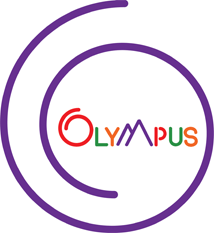Thursday, August 13, 2015
Toys That Teach the Basics of Coding
Why play with a toy when you can hack one? Puzzlets, Sphero Sprk, and Dash and Dot make it fun for kids to learn the ABCs of programming
THERE’S MORE TO computer programming than figuring out what inscrutable words like “augop” and “del_stmt” mean. Sure, you’ll have to master the vocabulary, as you do with any foreign language. But the more fundamental challenge is grasping the underlying concepts of coding. How do you get a machine to report the current temperature? Or find you a particularly promising blind date? Or drive your car while you ride along reading “Raise High the Roof Beam, Carpenters”?The programs that make these seemingly complex tasks possible may indeed be highly complex, but they’re all created using the same basic building blocks. Ones, it turns out, that are sufficiently simple for a child to master.
We’re starting to see a new class of educational toy that aims to teach children those computer-programming fundamentals. With the best examples, the process is so much fun it feels more like playing than learning. The toys here, for example, hide the gobbledygook of computer code language and instead present children (and curious adults) with commands that they can move around like physical or virtual blocks. And the interfaces have been mercifully simplified. If you can set an alarm on your smartphone, you’ll be able to program these toys without a hitch.
All of the toys shown here pair with a smartphone or tablet via Bluetooth to work their magic, and all are compatible with both Android and iOS. While none of will give a child the chops required to code, say, a smartphone app, they do something more important: Help children to think like programmers.
Here are our three favorite tech-ed toys for both learning and playing (for ages 5 and up).
Puzzlets
In some ways, the videogame included with Puzzlets is similar to classics like “Super Mario Bros.” or “Sonic the Hedgehog.” Just as in those early games, your Puzzlets character (a dinosaur, hedgehog or sloth) has to run and jump its way around various obstacles to collect keys, raindrops and other prized objects. Puzzlets introduces one important twist, though: Instead of controlling your character using a joystick, you do so by placing small plastic tiles—each of which triggers specific actions—onto a cloud-shaped board (what else?).
Some of the tiles determine your on-screen character’s movements (commanding it to turn left, turn right or jump). Others tiles, known as “modifiers,” can be added to tweak those actions. For example, by placing the “plus” modifier underneath the “jump” tile, you’ll make your character leap markedly higher. Finally, “multiplier” tiles can tell the program to repeat an action a certain number of times.
It may sound like a lot to wrap your head around. But it doesn’t take long to get the gist of the Puzzlets “language.” And that’s exactly the point. $100, available for preorder at digitaldreamlabs.com
Dash and Dot
These adorable little robots (that’s Dash on the left) come fully loaded with microphones (for listening to commands), speakers (so they can “talk”), proximity sensors and LED lights around each of their “eyes” to simulate blinking (quite convincingly). Dash is mobile, with a top-speed of 2.25 miles an hour. Dot is designed to just sit there, looking cute.
You program Dash and Dot using a tablet app called Blockly, which presents commands, such as “Drive” and “Look,” as colorful blocks that you can drag and drop in any order you like. An easy-to-program sequence would compel Dash to zoom forward, say “Hello,” then drive backward again. What’s brilliant about the Blockly language is that it makes a programming concept known as “conditional statements” so accessible. This lets you alter Dash’s behavior based on various situations. For example, if Dash hears a voice, it can look toward the speaker. Or when Dash senses an obstacle in front of it, it can stop and blink its lights. A wide range of accessories (bunny ears for Dot; a xylophone for Dash) gives children plenty of incentive to experiment. $230, makewonder.com
Sphero Sprk Edition
This motorized ball, with a top speed of 4.5 mph, is one of the most agile remote-control toys you can buy. (The BB-8 droid from the coming Star Wars movie—see it in action on YouTube—taps the same technology). Using its companion app, kids can program the Sprk to careen around corners, twirl in place or zip up and off ramps (it’s very sturdy). The Sprk can also light up in the color of your choice.
Like Dash and Dot, the Sprk uses a drag-and-drop approach to programming. But because the Sprk is a more physically nimble device, you can program it to complete more sophisticated movements, like a figure-8. Sprk also lets you experiment with more dramatic if-then statements. “On Freefall,” for example, lets you specify what the Sprk should do if it, say, rolls off a table. “On Collision” is for when Sprk hits something (accidentally or intentionally). For budding programmers who are ready to get their hands dirty with actual code, a separate Sprk app lets you see and edit the lines of proprietary code behind each program. $130, gosphero.com.
Corrections & Amplifications:
An earlier version of this article incorrectly referred to the Sphero Sprk Edition as the Sphero Sprk. Read More»
By: Nathan Olivarez-Giles
